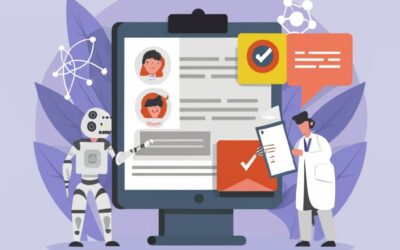The Society for Scholarly Publishing (SSP) Seminar, New Directions in Scholarly Publishing Models, focused on current and upcoming transitions and disruptions in the publishing industry. The ongoing transition to open access (OA) has spurred alternative paths to publication, from preprints to open and community peer review. With publishers looking for new ways to earn revenue in an OA world, these innovations have disrupted business models and existing systems, including updates to indexing and metrics and calls for greater standardization and transparency.
Open Access
At Technica Editorial, we have been following Plan S and the trend toward OA for some time. While the end goal may be an increase in or a complete transition to OA content, the seminar discussed the many ways to get there.
Sara Rouhi and Ann Michael discussed the experiences of native OA publisher, PLOS (we discussed the decline in published papers from the megajournal PLOS ONE in a previous blog post). Undoubtedly, PLOS has faced some growing pains. For example, the article processing charges (APCs) don’t cover the full costs for publishers, which is likely the reason why they have had to increase their fees previously. And in some ways, their quest for quality articles throws a wrench in the business model: Decreasing acceptance rates lead to an increase in costs for publishers, as rejected manuscripts may not collect a fee despite the processing costs. PLOS is currently exploring a variety of options as they try to answer the question: How do you get people to pay for something that is already open?
The current model of APCs as the chief source of funding for OA content seems increasingly insufficient. Fees for publication do not cover the cost of other content and services publishers may provide, including news, podcasts, and other multimedia. Publishers will need to get creative with business models. Simply increasing APCs is not the answer, and instead leads to bias against research from less-funded regions of the world. As Sara Rouhi put it,
“What have we gained by eliminating barriers to read if it has led to barriers to publish?”
Preprints and Other Repositories
Other industry disruptors include both preprints and repositories. While preprints allow researchers to fulfill open science requirements for funding, many authors fear that posting their articles on preprint servers will lead to their research being scooped by rivals or rejected by journals. Some preprint servers even assign DOI numbers, which means publishers and authors alike are affected by this citation cannibalization: When preprints are assigned DOIs, those DOIs are cited as pre-publication, which takes away from citations post-publication. Publishers therefore have to defend their impact factors and/or find a way to track and define preprint citations.
Open Science and Disrupting Peer Review
Another session, led by David Mellor, brought up the topic of registered reports. In these cases, authors submit a research plan, which is then peer reviewed, and the authors conduct the research according to the plan. After writing the paper, the work undergoes a second round of review to evaluate whether the authors followed the plan. If they did follow it, the paper is published regardless of the results. This format of peer review combats some biases toward novelty and statistical significance in scientific publications. But how much of this process is already captured in the form of grants and other funding processes?
That’s not the only way in which the traditional peer review model is being challenged. Damian Pattinson presented the idea of democratizing peer review. Through a “community” review, entire scientific communities—not just invited reviewers—are allowed to contribute comments and feedback on a manuscript. These comments can be public or private and can be considered by the editor alongside the invited reviewers’ formal reviews.
Speakers and attendees not only debated peer review theory, but also discussed changes to peer review execution. Machine learning (ML) and artificial intelligence (AI) can screen submitted preprints and suggest appropriate services to authors. For example, if the English is poor, copyediting is suggested, and statistical flaws could be caught before the peer review process even begins, saving reviewers and editors significant time. Additionally, ML automates the reviewer selection and invitation processes and flags potential author–reviewer conflicts. So-called “agnostic” reviews could be solicited prior to submission to any journal so that authors could receive solely science-based feedback without reviewers worrying about journal scope.
Such innovations could provide alternative revenue sources for OA publishers while increasing transparency. However, with these services and processes moved upstream, do we place an undue burden on authors? Do they have the funding to pay for additional services? Are we biasing peer review in favor of English publishers and hindering non-native English research? In trying to smooth and tighten the peer review process, are we simply adding more bloat?
New Tools
The seminar ended with presentations on tools for publishers looking to stay on top of new technologies. A brief rundown:
- scite provides a quick way to see how many citations (and what kind of citations) there are for a work you’re looking at.
- podDB aims to create a database of who’s who in podcasts.
- Meta is a recently launched platform that provides a feed of scientific content based on user input and ML/AI.
- UNSILO uses text analytics and AI/ML to screen manuscripts, find reviewers, conduct integrity and technical checks, classify the work, provide up-to-date keywords and metadata, and more.
Conclusion
The trend toward openness in science comes at a time of growing concern about the authenticity of information, leading to calls for transparency. The Internet has fostered a way to share information instantaneously around the world, providing new possibilities for collaboration in science. Repositories, OA, and open review can help facilitate that. Similarly, ML and AI can pave the way toward “brutal efficiency” in peer review and manuscript processing, which could help cut publishing costs in an era of OA.
How will publishing look 10 or 20 years from now? How will we ensure that publishing remains equitable and does not cater to those with more funding? And how will new processes and technologies affect the way research is conducted and disseminated?
Let us know your thoughts in the comments section below!





